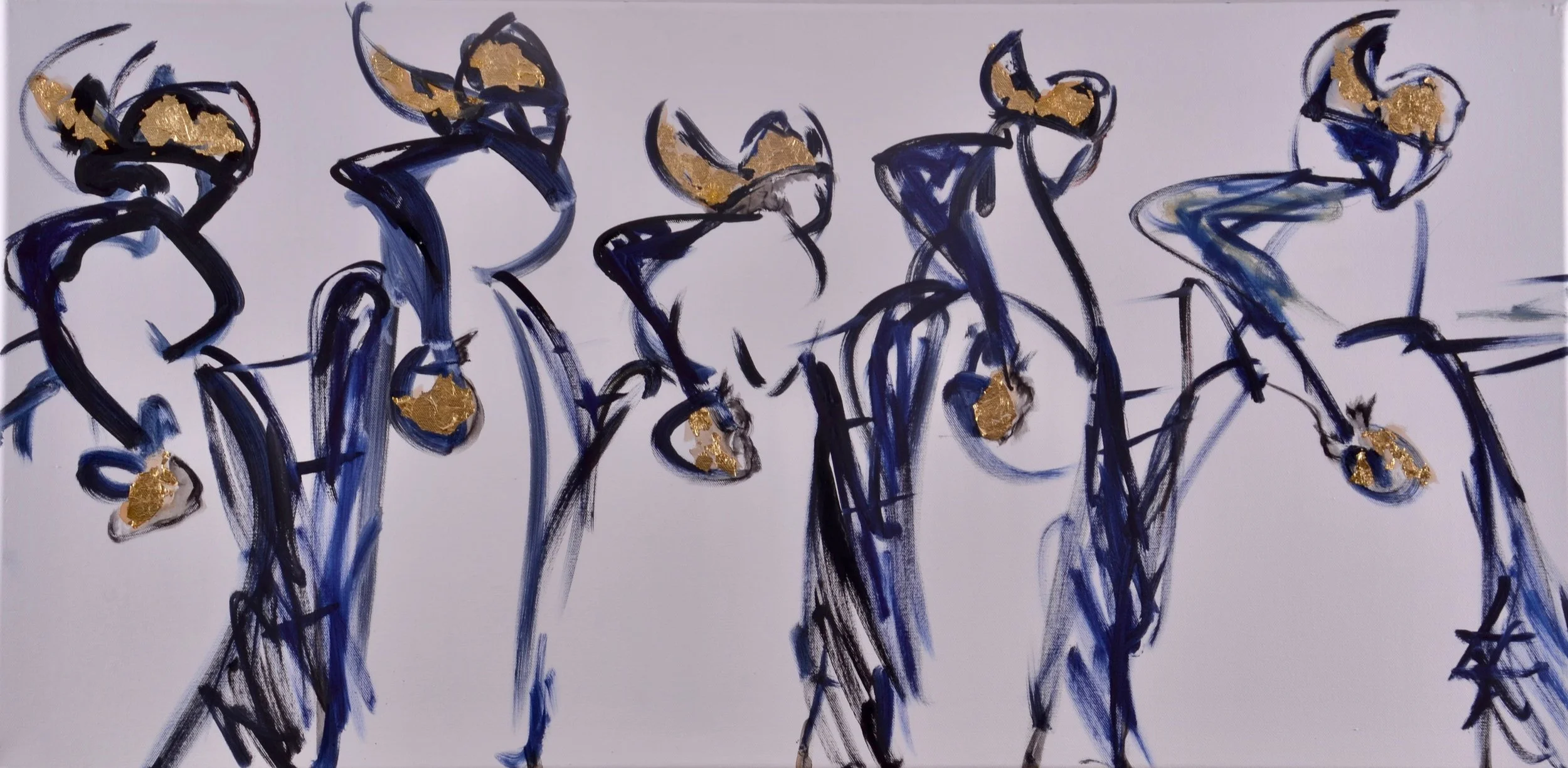Interview with Kerstin Kager
Kerstin Kager | Austria
"Painting is telling my story."
An artwork is like a story told. I choose a theme, a motive, a symbol which matters to me. Painting is searching for answers. Painting leads me through this process. Painting is telling my own story through my works. When I've found an answer to my question, the artwork is finished for me. My work consists of paintings, drawings and mixed media artworks. By exploring the concept of landscape in a nostalgic way, I often create wide views to make the world more open.
My paintings are saturated with obviousness and clichés, sometimes bad jokes. They question the coerciveness that is derived from the more profound meaning and the superficial aesthetic appearance of my works. By questioning the concept of movement, I make works that can be seen as self-portraits. Sometimes they appear idiosyncratic and quirky, at other times, they seem typical by-products of the Austrian way of life.
My works try to isolate the movements of humans. By doing so, new sequences are created which reveal an inseparable relationship between motion and sound. I want the viewer to become part of the art as a kind of added component. By creating situations and breaking the passivity of the spectator, my creations long to touch in a specific way. In the best case, the spectator finds a part of his story in my work. I often consider movement as a metaphor for the ever-seeking man.
Toro with a trace of black and red
Contemporary Art Station: Tell us about how you got started. When did you know you wanted to be an artist?
From child on, I've always been drawing, later painting. I've never stopped being active in artwork through the years. Colors have been one of the most fascinating things in my life.
Being an artist is living my life and painting is telling my story.
CAS: What is your process like, from initial idea to the creation of the piece? Do you usually develop the idea for a project before you find the "canvas", or vice versa?
Painting is a process where I to search for answers and painting leads me through this process. It is like telling my own story through my works. When I've found an answer to my question, the artwork is finished for me.
To approach a theme, I choose a symbol that matters to me. This is the idea before I start painting on canvas.
But sometimes the symbol appears directly in my sketches, I'm working on the symbol and later on, it will be part of ma canvas.
CAS: What do you love most about your creative process?
Being creative is being surprised! So if you love surprises, become an artist!
The creative process is a never-ending story.
Ans as an artist I like to go into the process, to search for answers.
Art work leads me as through beautiful moments in life as through rough moments as well.
Every moment is part of the creative process. It is always continuity, but what is changing is symbols, it is the medium and the materials.
Indigo: Back to the roots
CAS: What role does art and the artist play in the broader social conversation today?
Artists create situations in which everyday objects are altered or detached from their natural function. By applying specific combinations and certain manipulations, different functions and contexts are created. By parodying mass media by exaggerating certain formal aspects inherent to our contemporary society, an artist tries to develop forms that do not follow logical criteria, but are based only on subjective associations an formal parallels, which incite the viewer to make ne personal associations.
CAS: Name a few of your favourite artists and influences.
Pablo Picasso
Matisse
René Magritte
Miró
Maria Lassnig
CAS: What is the best advice you received as an artist?
You are an artist, your job is to create, your job is to paint - go for it!
Tori in front of yellow
When did you discover your voice as an artist?
It was in a dream: I discovered a golden egg in a winter wonder land - all in white! When I woke up in the morning, I' had to paint it. And this was the start to paint symbols from inside.
CAS: What advice would you give to emerging artists trying to find their own?
Let your intuition guide you!
Thank you Kerstin!




